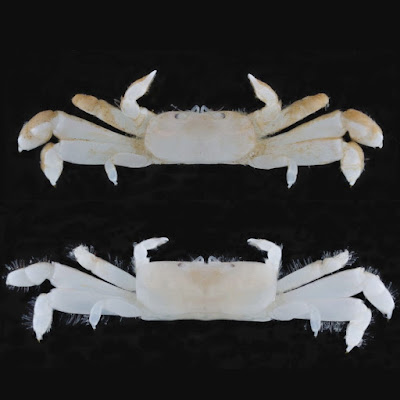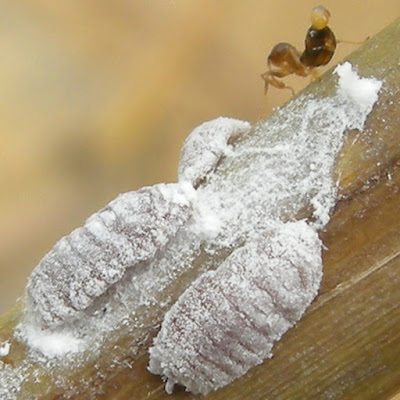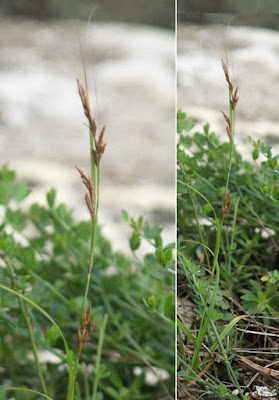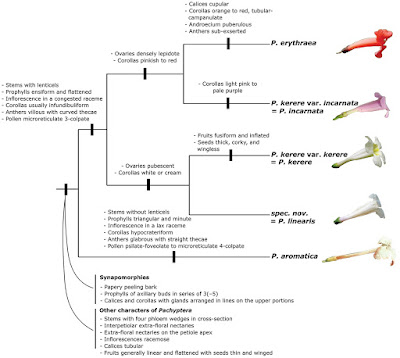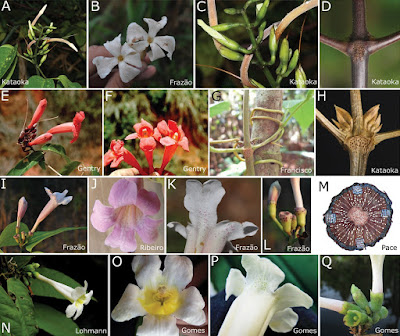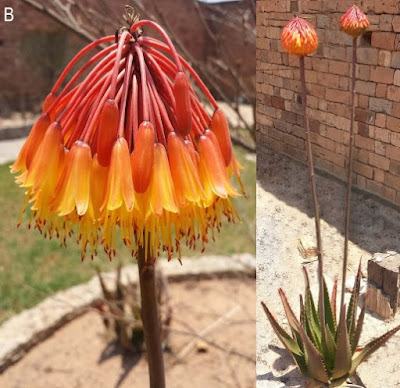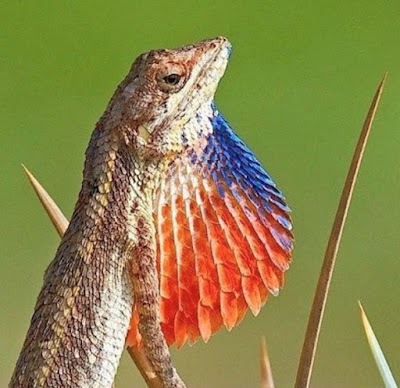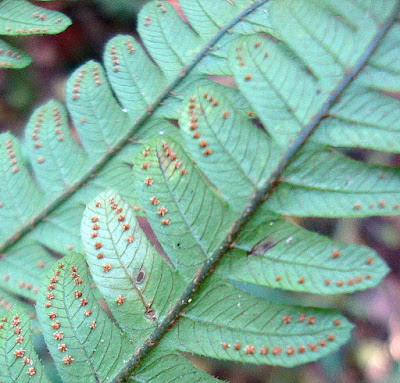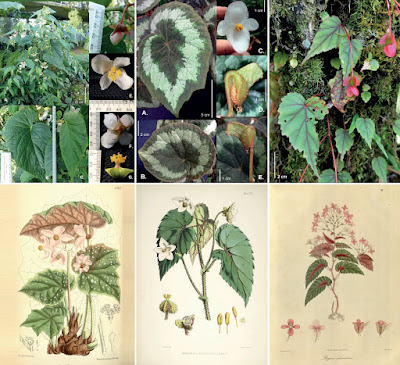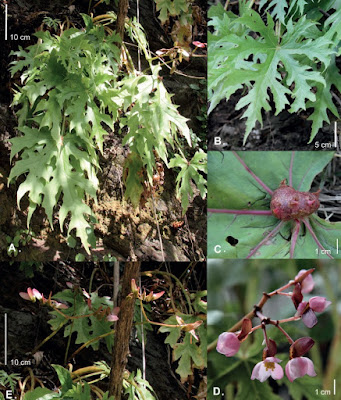[Most Recent Entries] [Calendar View]
Tuesday, January 23rd, 2018
| Time | Event | ||
| 1:42a | [Crustacea • 2018] Takedactylus compressus & Lichtylus kaisha • Two New Species of Aphanodactylidae (Decapoda: Brachyura) from the Ryukyu and Ogasawara Islands, Japan, with the Establishment of A New Genus Abstract A new species of Takedactylus Naruse & Maenosono, 2012, and a new genus and species of Aphanodactylidae are described from Japan. Takedactylus compressus n. sp. is collected from Ogasawara Islands. This new species is distinct from the only congener, Takedactylus masatsunei, by the shapes of the carapace, third maxilliped and the ambulatory legs. Another new species, monotypic Lichtylus kaisha n. gen., n. sp., is distinct from all other aphanodactylid species, in generic level, in the shape and position of the palp of third maxilliped, relatively long and slender ambulatory legs, and a combination of other important characters, i.e. the contour of the carapace, the degree of gap between third maxillipeds, condition of the distoflexor corners of second to fifth ambulatory propodi, and relative length of ambulatory dactyli. The present study brings the number of aphanodactylid taxa to 7 genera and 15 species. Keywords: Taxonomy, new genus, new species, Brachyura, crab, Aphanodactylidae, Japan Tohru Naruse and Ryuta Yoshida. 2018. Two New Species of Aphanodactylidae (Crustacea: Decapoda: Brachyura) from the Ryukyu and Ogasawara Islands, Japan, with the Establishment of A New Genus. Tropical Zoology. DOI: 10.1080/03946975.2017.1395163 ゴカイと暮らす“ぺったんこ”なカニの新種を発見! | お茶の水女子大学 ocha.ac.jp/news/20180116_01.html | ||
| 2:23a | [Entomology • 2018] Saccharicoccus chinensis • A Review of the Genus Saccharicoccus Ferris, 1950 (Hemiptera: Coccomorpha: Pseudococcidae) in China, with Description of A New Species
Abstract The mealybug genus Saccharicoccus Ferris includes three species: S. isfarensis (Borchsenius, 1949), S. sacchari (Cockerell, 1895) and a new species, S. chinensis Zhang, Wu & Wu sp. n. The new species, collected on Miscanthus sp. (Poaceae) and other poaceous weeds in China, is described and illustrated, and molecular analyses based on the mitochondrial gene cytochrome c oxidase subunit I (COI) are provided. Additional data on the distribution and host-plants of each species are given, and a key to the adult females of Saccharicoccus species is provided. Keywords: Hemiptera, mealybugs, minute pores, COI, distribution, host-plants Jiang-Tao Zhang, Bo-Wen Wu and San-An Wu. 2018. A Review of the Genus Saccharicoccus Ferris, 1950 (Hemiptera: Coccomorpha: Pseudococcidae) in China, with Description of A New Species. Zootaxa. 4375(1); 127–135. DOI: 10.11646/zootaxa.4375.1.7 | ||
| 6:34a | [Botany • 2017] Carex socotrana • A New Endemic Species (Cyperaceae) from Socotra Island
ABSTRACT We describe Carex socotrana Rěpka & Maděra, a new endemic species found in the Hajhir Mountains on Socotra Island. It differs from the morphologically similar African continental species C. steudneri Boeckeler in having a shorter stem, smaller leaf length and width, completely smooth leaf blades and margins, and pistillate scales without a whitish membranous margin and with distinctive awns at the apex. The spike clusters are smaller and more scattered on the stem, and the perigynium and its beak are smaller than in C. steudneri. So far only one small and one large population have been found near the highest mountain peak, Mount Scand. The new taxon is 1370 km from the closest known site of C. steudneri. Keywords: Carex, Cyperaceae, IUCN, Socotra Radomír Řepka, Petr Maděra, Martin Čermák and Alan Forrest. 2017. Carex socotrana, A New Endemic Species from Socotra Island. Novon: A Journal for Botanical Nomenclature. 25(4); 467–472. DOI: 10.3417/D-16-00004 | ||
| 7:47a | [Botany • 2018] Taxonomic Revision of Pachyptera (Bignonieae, Bignoniaceae)
Abstract Pachyptera DC. is a small genus of neotropical lianas included in tribe Bignonieae (Bignoniaceae). The genus has a complicated taxonomic history but currently includes species distributed from Belize to Southern Amazon. Pachyptera is characterised by four main synapomorphies, namely, a papery peeling bark, prophylls of the axillary buds organised in a series of three, patelliform glands arranged in lines in the upper portions of the calyx and corolla tube. Furthermore, members of the genus also have stems with four phloem wedges in cross-section and conspicuous extrafloral nectaries between the interpetiolar region and at the petiole apex, although these characters are also shared with other genera of tribe Bignonieae. Here, we present a taxonomic revision of Pachyptera, which includes a complete list of synonyms, detailed morphological descriptions of species and an identification key, as well as information on the habitat, distribution and phenology, nomenclatural notes, taxonomic comments and illustrations of all the species. In addition, we designate three lectotypes, propose one new combination, raise one variety to species status and describe a new species. After these adjustments, a Pachyptera with five well-defined species is recognised. Keywords: Amazon, Flora, Pachyptera kerere, Neotropics, Taxonomy Jessica Nayara Carvalho Francisco and Lúcia G. Lohmann. 2018. Taxonomic Revision of Pachyptera (Bignonieae, Bignoniaceae). PhytoKeys. 92: 89-131. DOI: 10.3897/phytokeys.92.20987 | ||
| 1:04p | [Botany • 2017] Aloe belitsakensis • A New Species (Asphodelaceae) from north-western Madagascar
Madagascar is a major centre of diversity for the leaf-succulent genus Aloe Linnaeus (1753: 319) accounting for roughly a third of Aloe species (Carter et al. 2011). Approximately 128 species and 161 taxa are known from the region and all are restricted to Madagascar (Rakotoarisoa et al. 2014) and/or the nearby Mascarene archipelago. New taxa are described from these islands at a rate that rivals the ongoing discovery of aloes elsewhere in their natural range, on the African continent or Arabian Peninsula (Crouch et al. 2013). Extinction risks are alarmingly high among species of Aloe in this region. Conservatively, 39% of species are known to be threatened, and this figure is likely to be significantly higher (Rakotoarisoa et al. 2014), since several species have not been observed or collected for many decades. The Kew Madagascar Conservation Centre (KMCC) aims to record and collect the rare and threatened flora of Madagascar to ensure its conservation, and the genus Aloe is a priority for the dryland programme. Keywords: Aloe, new species, Xanthorrhoeaceae, Madagascar, Monocots Solofo E. Rakotoarisoa and Olwen M. Grace. 2017. Aloe belitsakensis (Asphodelaceae): A New Species from north-western Madagascar. Phytotaxa. 328(3); 276–282. DOI: 10.11646/phytotaxa.328.3.6 | ||
| 1:14p | [Herpetology • 2018] Sitana attenboroughii • A New Species of Fan-throated Lizard of the Genus Sitana Cuvier, 1829 from coastal Kerala, southern India
Abstract We here describe Sitana attenboroughii sp. nov., a new species of fan-throated lizard of the genus Sitana Cuvier, 1829 from coastal Kerala in southern India. The new species morphologically is closer to Sitana visiri Deepak, 2016 (in Deepak et al. 2016a), however, differs in having higher numbers of ventral scales and a comparatively short but richly colored dewlap. Genetically the new species shows affinity to Sitana marudhamneydhal Deepak, Khandekar, Varma & Chaitanya, 2016 from which it differs in an uncorrected pairwise sequence divergence of 2.2% for a fragment of mitochondrial Nicotinamide adenine dinucleotide dehydrogenase (NADH) subunit 2 gene. Keywords: Reptilia, taxonomy, India, molecular phylogeny, mitochondrial DNA, Kerala Kalesh Sadasivan, M. B. Ramesh, Muhamed Jafer Palot, Mayuresh Ambekar and Zeeshan A. Mirza. 2018. A New Species of Fan-throated Lizard of the Genus Sitana Cuvier, 1829 from coastal Kerala, southern India. Zootaxa. 4374(4); 545–564. DOI: 10.11646/zootaxa.4374.4.5 | ||
| 2:23p | [Botany • 2018] A Taxonomic Monograph of the Fern Genus Ctenitis (Dryopteridaceae) in South America
Abstract Based on collections of 45 Herbaria in addition to newly collected specimens and some field observations, a taxonomic treatment for South American Ctenitis is provided, a hundred years after Christensen’s monographs. Guided by morphological species concept, 26 taxa are recognized (23 species and three varieties). A key including all taxa is provided, and all species are fully morphologically described, with information on distribution and habitat. Brazil is the richest country with 22 taxa, of which 13 are endemic, restricted mainly to Atlantic Forest. Taxa occurring in the other South American countries are also widely distributed in Mesoamerica and West Indies, except C. megalastriformis, only known from Peru, and C. refulgens var. peruviana, recorded in Peru and Bolivia. We dealt with 163 names that apply to the South American species. In addition, we propose three new combinations, and designate 38 lectotypes and three neotypes. Keywords: Atlantic Forest, Brazil, ferns, Neotropics, taxonomy, typification, Pteridophytes Raquel Stauffer Viveros, Germinal Rouhan and Alexandre Salino. 2018. A Taxonomic Monograph of the Fern Genus Ctenitis (Dryopteridaceae) in South America. Phytotaxa. 335(1); 1–83. DOI: 10.11646/phytotaxa.385.1.1 | ||
| 11:57p | [Botany • 2018] A Revision of Begonia L. (Begoniaceae, Cucurbitales) from Northeast India with Description of A New Species, Begonia koelzii Abstract Following a taxonomic revision of Begonia L. (Begoniaceae, Cucurbitales) from Northeast India based on 332 herbarium specimens, 38 species are confirmed to occur in the region, of which ten are endemic. One new species is described, Begonia koelzii R.Camfield sp. nov., in B. sect. Platycentrum (Klotzsch) A.DC. One species is reduced into synonymy; B. barbata Wall. is now a synonym of B. thomsonii A.DC. Three species, B. difformis (Irmsch.) W.C.Leong, C.I Peng & K.F.Chung, B. labordei H.Lév. and B. handelii Irmsch., are reported new for India, and B. lushaiensis C.E.C.Fisch. is reinstated as an accepted species, having previously been synonymised under B. modestiflora Kurz. A key to the species in the region and preliminary conservation assessments are presented. Keywords: Begonia; taxonomy; revision; Northeast India
Begonia koelzii R.Camfield sp. nov. [sect. Platycentrum] Diagnosis: Similar to B. macrotoma Irmsch. (1951: 41) in having lacerate leaves, but differs in having a larger lamina (20–40 cm long, not 12–15 cm) and female flowers with 4–6 (not 3) tepals. Etymology: The epithet honours Walter N. Koelz (1895–1989), the American zoologist who collected the type. Distribution and phenology: Endemic to the Arakan Mountain Range, usually found growing on cliff faces; 1000–2100 m. Conservation status Data Deficient: The full distribution of B. koelzii in the Arakan mountains is unknown Rebecca Camfield and Mark Hughes. 2018. A Revision and One New Species of Begonia L. (Begoniaceae, Cucurbitales) in Northeast India. European Journal of Taxonomy. 396; 1–116. DOI: 10.5852/ejt.2018.396 |
| << Previous Day |
2018/01/23 [Calendar] |
Next Day >> |
